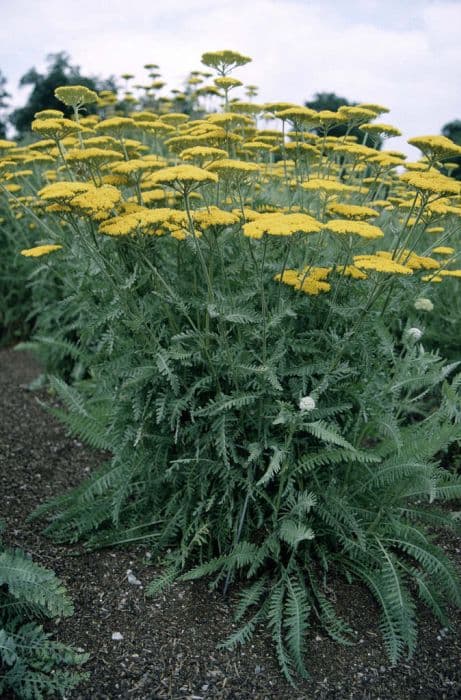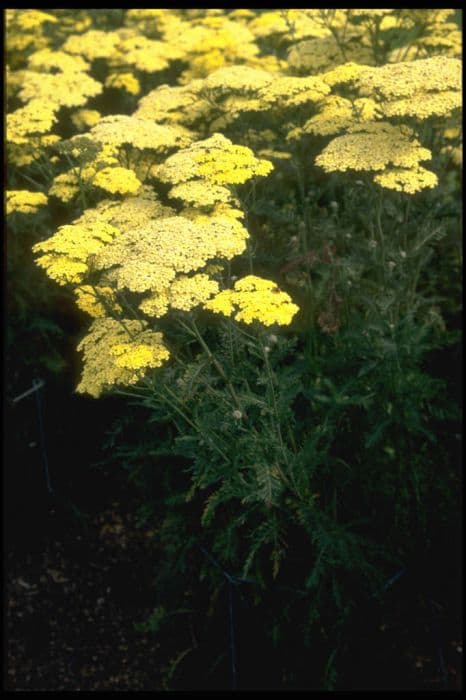Sea aster Galatella sedifolia

ABOUT
Galatella sedifolia is a perennial herb known commonly as the sedifolia aster. This plant typically exhibits a bushy, clump-forming habit. Its stems are erect and often branched, giving the plant a somewhat untidy appearance. The leaves of sedifolia aster are reminiscent of Sedum species, hence the name sedifolia, which means "with leaves like Sedum." These leaves are fleshy and may have a smooth or slightly hairy texture, often arranged alternately along the stem. They are generally oval to spatula-shaped, with entire margins that lack significant serration or lobing. As for the flowers, they are the star attraction of this plant, typically blooming in a composite manner characteristic of the aster family. The flower heads are made up of a central disk surrounded by slender ray florets. These ray florets are typically a striking shade of lilac, purple, or occasionally pink, with a yellow to orange central disc that contains smaller disk florets. The overall floral display can be quite showy and adds to the visual interest of the plant in a garden setting. The sedifolia aster may also produce small, seed-like fruits called achenes, which can sometimes exhibit tufts of hair that aid in wind dispersal. These fruits allow for the propagation of the plant and the continuation of its lifecycle in suitable growing conditions. Overall, the sedifolia aster has a distinct and attractive appearance, especially during its flowering period when it provides a colorful accent in naturalistic plantings and wildflower gardens.
About this plant
 Names
NamesFamily
Asteraceae.
Synonyms
No common names found.
Common names
Aster sedifolius, Crinitaria sedifolia.
 Toxicity
ToxicityTo humans
Information on the toxicity to humans of Galatella sedifolia, commonly known as Leafy Aster, is not widely established or documented in major toxicology references. As such, it is considered that this plant might not be significantly toxic. However, without specific information, it is always wise to exercise caution and avoid ingesting plants that are not known to be safe. If toxicity is present, symptoms would likely be similar to other mildly toxic plants, potentially including gastrointestinal discomfort, nausea, vomiting, or diarrhea.
To pets
Similar to the information available for humans, there is limited documentation on the toxicity of Galatella sedifolia, or Leafy Aster, to pets. It is not known to be a commonly reported toxic plant to pets like dogs and cats. However, pet owners should still be cautious and prevent pets from ingesting plants that are not confirmed to be safe. If the plant were toxic, possible symptoms in pets could include gastrointestinal upset such as vomiting or diarrhea, which is a common response to the ingestion of non-food items or mildly toxic plants.
 Characteristics
CharacteristicsLife cycle
Perennials
Foliage type
Deciduous
Color of leaves
Green
Flower color
Purple
Height
1-2 feet (30-60 cm)
Spread
1-2 feet (30-60 cm)
Plant type
Herb
Hardiness zones
5
Native area
Europe Asia
Benefits
 General Benefits
General Benefits- Ecosystem Support: Galatella sedifolia, also known as Sea Aster, provides nectar and pollen for bees and other pollinating insects, fostering biodiversity.
- Habitat Restoration: As a native species in some regions, it helps in the restoration of natural habitats and the support of local wildlife.
- Soil Stabilization: The root system of Sea Aster can help to stabilize soil and prevent erosion in coastal areas where it naturally occurs.
- Ornamental Value: With its attractive flowers, Sea Aster can add aesthetic value to gardens and landscapes.
- Drought Resistance: Being adapted to harsh coastal environments, Sea Aster is generally drought-tolerant and can thrive in dry conditions.
- Adaptive Growth: It can grow in a variety of soil types, from sandy to loamy, making it adaptable to different garden settings.
- Low Maintenance: Sea Aster typically requires minimal care, making it a practical choice for low-maintenance gardening.
- Cultural Significance: In some cultures, the plant holds symbolic meaning and is incorporated into various cultural practices and traditions.
 Medical Properties
Medical PropertiesThis plant is not used for medical purposes.
 Air-purifying Qualities
Air-purifying QualitiesThis plant is not specifically known for air purifying qualities.
 Other Uses
Other Uses- Galatella sedifolia, commonly known as Sea Aster, can be utilized as a natural dye for fabrics due to its pigmentation properties.
- In crafts, the dried flowers of Sea Aster are often used to create floral arrangements and wreaths for decoration.
- Sea Aster plants can serve as a ground cover in coastal gardens, helping to reduce soil erosion with their spreading habit.
- The tough, fibrous stems of Sea Aster can be used to make paper or as a component in bio-composite materials.
- Gardeners sometimes use the Sea Aster as companion plants to attract beneficial insects that help with pest control.
- Sea Aster's vigorous growth can be harnessed for planting in areas requiring rehabilitation or soil stabilization, such as reclaimed sites.
- In art, Sea Aster petals can be pressed and used in botanical prints or to create natural patterns in paintings.
- Fishermen have been known to use Sea Aster as a discreet marker plant to indicate hidden crab pots or fishing locations.
- Ecologically, Sea Aster plays a role in sand dune systems as a pioneer species that helps develop habitat for other species.
- Culinary experimenters may use Sea Aster as an edible garnish, though this is less common and primarily for visual appeal rather than flavor.
Interesting Facts
 Feng Shui
Feng ShuiThe plant Galatella sedifolia is not used in Feng Shui practice.
 Zodiac Sign Compitability
Zodiac Sign CompitabilityThe plant Galatella sedifolia is not used in astrology practice.
 Plant Symbolism
Plant Symbolism- Resilience: Galatella sedifolia, commonly known as Sea Aster, often grows in tough coastal conditions, symbolizing the ability to endure and thrive in challenging environments.
- Adaptability: Sea Aster adapts to varying levels of salinity and moisture, representing flexibility and the capacity to adjust to different situations in life.
- Beauty and Hope: With its bright and cheerful flowers, Sea Aster stands as a symbol of beauty and hope amidst barren landscapes, signifying that there is always something to look forward to even in less favorable circumstances.
- Survival: Its ability to survive high salt concentrations and tidal changes makes the Sea Aster emblematic of survival and the tenacity of life.
 Water
WaterThe best practice for watering a Sea Aster, which is the most common name for Galatella sedifolia, is to maintain consistent moisture without over-saturating the soil. Water Sea Asters with approximately 1 gallon of water every week during their active growing season, ensuring the water penetrates the soil to reach the roots. Reduce watering frequency during the dormant season or in cooler weather to prevent root rot. Always check the top inch of the soil for dryness before watering; if it's dry, it's time to water. Avoid letting the plant sit in standing water.
 Light
LightSea Aster thrives in full to partial sunlight, making it perfect for sunny borders or open gardens that receive at least six hours of direct sunlight each day. Areas with bright, indirect light for the remainder of the day are also suitable. Be cautious of too much shade, which can lead to leggy growth and fewer flowers.
 Temperature
TemperatureSea Aster prefers moderate temperatures and can tolerate a range spanning from around 40 degrees Fahrenheit to 75 degrees Fahrenheit. Optimal growth occurs when the ambient temperature is within the middle of this range. Protection from frost is necessary, as temperatures below 40 degrees Fahrenheit can be detrimental to the plant.
 Pruning
PruningPruning Sea Aster involves deadheading spent blooms to encourage continuous flowering and removing any damaged or diseased stems to maintain plant health. Annual light pruning in the early spring helps to shape the plant and control its size. The best time for more substantial pruning is after the plant has finished flowering.
 Cleaning
CleaningAs needed
 Soil
SoilFor Sea Aster, the best soil mix is well-draining with some added organic matter. It prefers a soil pH ranging from 5.5 to 7.5. A combination of loam, peat, and sharp sand or perlite can provide the right balance of nutrients and drainage.
 Repotting
RepottingSea Aster generally does not require frequent repotting and can be repotted every 2-3 years or when it outgrows its current pot, whichever comes first.
 Humidity & Misting
Humidity & MistingSea Aster thrives in moderate to high humidity levels but is adaptable to a range of conditions provided it is not in an extremely dry environment.
 Suitable locations
Suitable locationsIndoor
Provide Sea Aster with bright indirect light and maintain even moisture.
Outdoor
Plant Sea Aster in full sun to partial shade in well-drained soil.
Hardiness zone
5-9 USDA
 Life cycle
Life cycleStonecrop Aster (Galatella sedifolia) typically starts its life as a seed that germinates in moist, well-drained soil in a sunny to partially shaded area. After germination, the seedling emerges and begins to establish a root system, growing into a small rosette of leaves during its juvenile phase. As it matures, the plant develops a sturdy stem and more foliage, reaching the vegetative stage where it focuses on growth and nutrient accumulation. Upon reaching reproductive maturity, the Stonecrop Aster produces clusters of daisy-like flowers that are usually lilac or pink to attract pollinators. After pollination, the flowers develop into seed heads, releasing seeds that can lead to the establishment of new plants. During winter, the plant may die back to the ground, becoming dormant, with the root system surviving to sprout new growth in the spring, thus completing its perennial life cycle.
 Propogation
PropogationPropogation time
Spring-Early Summer
Propogation: The most popular method for propagating Galatella sedifolia, commonly known as the Leafy Aster, is through division. The best time to divide this plant is in early spring or autumn when the weather is cool, which helps to reduce stress on the plant. To propagate by division, dig around the clump of the Leafy Aster, lifting it gently out of the ground with a garden fork or spade. Shake or rinse off excess soil, and using a sharp knife or spade, divide the clump into smaller sections, ensuring that each section has healthy roots and a few shoots. Replant the divisions immediately, spacing them approximately 12 inches (about 30 centimeters) apart to allow room for growth. Water the newly planted divisions well to help establish them. It is essential to maintain consistent moisture and provide a light mulch to protect the roots until the new plants are well established.









